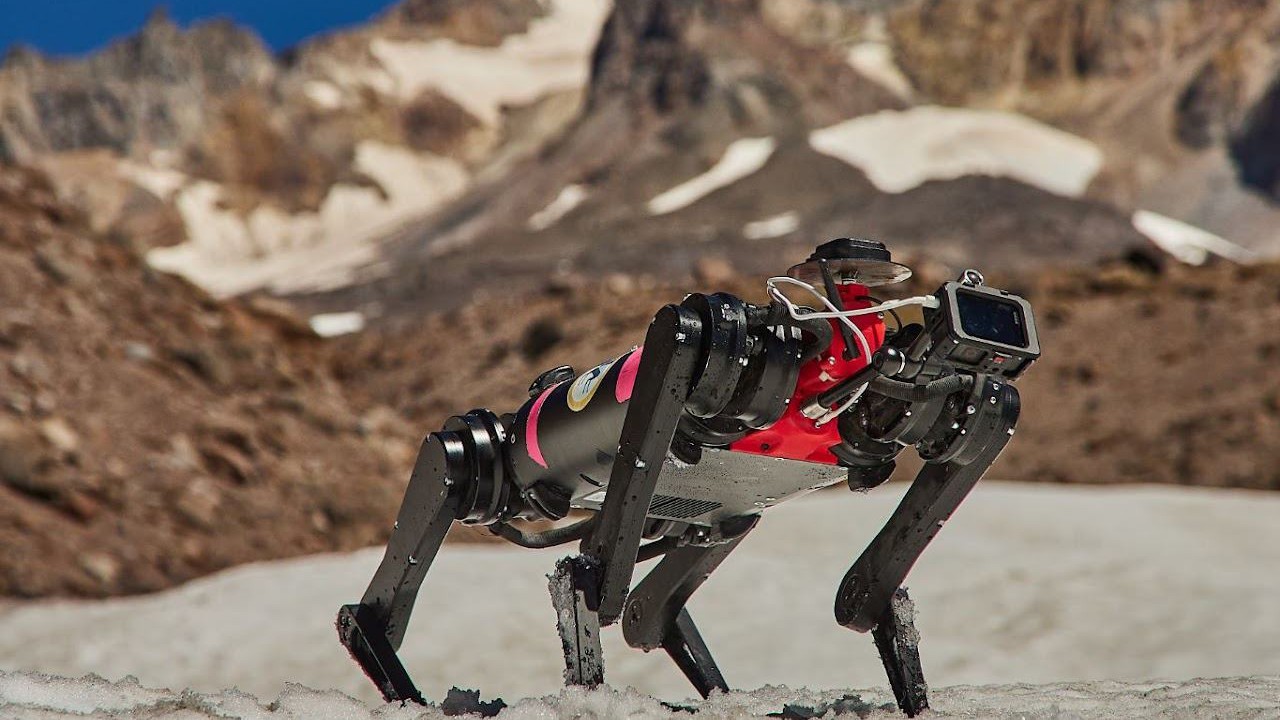Packs of dog-shaped robots could one day roam the moon — if they can find their footing on Earth first
A dog-like, bio-inspired robot called Spirit is still learning to walk, but could one day be deployed on the moon to explore steep, potentially hazardous areas with a team of robot companions.

"A dog is a man's best friend," the old saying goes. Can the same soon be said of robot dogs?
This summer, a group of scientists will travel to Oregon's snow-capped Mt. Hood to train a dog-shaped robot named Spirit how to walk. The slopes of Mt. Hood are strewn with volcanic rocks and sprinkled with glaciers, a rugged environment that researchers think resembles the moon — which Spirit is being prepared to eventually explore.
"What we realized, pretty early on, is that a legged robot has the ability to interact with soil in ways that wheels cannot," Douglas Jerolmack, a professor of Earth and planetary sciences at the University of Pennsylvania and the principal investigator of the project, said in a statement. "This interaction isn't just about mobility; it's about questioning and understanding the environment it moves through, in real time."
The $3 million Spirit, whose development is being funded by NASA, relies on its camera head and four metal legs, which "feel" the uneven terrain below, like a human testing the sturdiness of a frozen river with a few foot taps. Depending on the stability of the ground, Spirit should then adjust its speed and direction accordingly.
Last summer, a test of how well Spirit sensed its environment on Mt. Hood revealed the robot could move across and over slushy snow as well as sprint on loose soil and boulders — though the robot occasionally stumbled and fell.
"We learn and improve from the observed failures," Feifei Qian, an assistant professor of electrical and computer engineering at the University of Southern California (USC) and the lead researcher of the project, said in a USC statement.
Get the world’s most fascinating discoveries delivered straight to your inbox.
Fetch, rover
So far, the moon has been explored in-situ by four-wheeled rovers, starting with Russia's Lunokhod 1 that arrived on the lunar surface in 1969 and traversed about 6 miles (10 kilometers) in 10 months. Two years later, astronauts with the Apollo missions used a dune buggy-like vehicle to drive more than 22 miles (35 kilometers) on the moon. The most recent wheeled robot was the Pragyan rover, part of India’s Chandrayaan-3 mission, which traversed 331 feet (101 meters) and had to navigate around a crater during the two-week mission.
While rovers are unquestionably useful for ferrying astronauts and hauling equipment, they cannot drive on steep slopes and their wheels could get stuck when exploring new places, such as the lunar south pole where patches of ice remain as a frozen layer on loose soil. The risks limit rovers to already well-explored places, whereas legged robots can sprint up slopes, over boulders and are more mobile to explore unfamiliar regions, the researchers said.
The moon may someday even become a collaborative workplace for teams of legged and wheeled robots that work together to avoid hazards. Earlier this year, NASA funded $2 million to researchers at USC and the University of Pennsylvania to create algorithms that will allow multiple robots to link together, exchange local ground conditions and collaboratively map out a safe path forward.
For instance, if a robot got stuck, other robots nearby would be able to attach to one another to form a bridge and hoist the trapped robot to safety, according to the description of the project, which is called TRUSSES (short for Temporarily, Robots Unite to Surmount Sandy Entrapments, then Separate).
"Very little of the moon's surface has actually been explored," Cynthia Sung, a professor of mechanical engineering at the University of Pennsylvania who leads TRUSSES, said in the statement. "So it makes sense to have robot teams that can both sense and adapt to unexplored terrain."
Next year, the researchers plan to fine-tune Spirit in the dune fields at White Sands, New Mexico. There is no confirmed date for when Spirit might set its four feet on lunar soil.

Sharmila Kuthunur is an independent space journalist based in Bengaluru, India. Her work has also appeared in Scientific American, Science, Astronomy and Space.com, among other publications. She holds a master's degree in journalism from Northeastern University in Boston. Follow her on BlueSky @skuthunur.bsky.social


